| Botanical Name |
|
| Family |
Aloeaceae - The aloe family. |
| Pronunciation |
|
| Common Name(s) |
IsiXhosa: iKhalana; iKhalene; Inhlaba Empofu
|
| Plant Group |
- Succulent A plant having fleshy stems or leaves often adapted to dry conditions.
|
| Plant Size |
- Large
| Tree | 18m to 25m |
| Shrub | 3m to 4m |
| Perennial/ground cover | 75cm to 1m |
| Bulb | 80cm to 1.2m |
| Succulent | 1m to 1.5m |
|
| Position |
- Dry Shade Shady areas where soil has poor water retention or are dependent on rain for their moisture needs.
- Light or Dappled Shade Found below trees with sparse, open foliage. Ideal for the protection of herbaceous plants.
- Partial Shade The area is in shade for part of the day and in full sun for part of the day.
- Sun The area is in full sun for all or most of the day, all year round.
|
| General Information |
- Drought Tolerance: High The plant is well adapted to arid conditions; it can survive long periods of drought and high temperatures without extra water.
- Evergreen Plants that have leaves all year round.
- Frost: Tender A plant that will not survive any frost or low winter temperatures.
- Water Wise Plant species originating from low rainfall regions that require less water to survive and thrive than other plant species.
- Wind Tolerant Plants able to withstand the effect of strong winds.
|
| Specific Information |
Aloe tenuior is a rambling aloe which forms a sprawling bush. They are most attractive when in flower with a mass of delicate yellow or red flowers. Although somewhat sprawling and untidy, the grey blue foliage, a long flowering period and medium height make it useful for mass background planting. The leaves, crowded on the ends of the branches, are quite soft and are serrated along the edges.
|
| Ad Break |
|
| Flowers |
| Description |
Slender stems (racemes) of tubular blooms.
|
| Season |
- Autumn to Winter Plants will seldom bloom for the entire season as given in the list, but should flower during a period within these parameters.
- Winter Plants will seldom bloom for the entire season as given in the list, but should flower during a period within these parameters.
|
| Colour |
|
| Growth Rate |
- Moderate Specifying growth rate can be very misleading as there is considerable variation of growth rate depending on type and species of plant, available water, supplementary feeding, mulching and general care, as well as the plants suitability and adaptability to the garden environment.
|
| Plant Uses |
- Attracts bees, butterflies or other insects This plant attracts insects which can be food for birds or other creatures in your garden.
- Attracts Birds This plant will attract birds.
- Border A strip of ground, at the edge of a driveway or path in which ornamental plants or shrubs are planted.
- Boundary A plant useful for planting around the edges of the property to form a green or colourful backdrop, an impenetrable hedge, to hide walls or create privacy.
- Rock Garden An area constructed of larger rocks, arranged naturally, to emphasise the use of stones as a main element. Generally plants used do not need a lot of care.
- Suitable for coastal gardens Plants adapted to dry, sandy soil, forceful wind, limited rainfall and intense sunlight.
- Wild Garden An indigenous garden planted for the benefit of wildlife and birds. Provides food, water, a variety of mini-biomes and no poisonous chemicals are used.
|
| Distribution and Habitat |
Eastern Cape and southern KwaZulu-Natal, in dry thickets
|
| Planting Suggestions |
The site where Aloe tenuoir is to be planted should be well-drained and it will perform best if watered occasionally. Although it is known to grow up to 3 m tall, mine have never grown above 1,5 meters.
|
| Medicinal Uses |
The leaves are used as a remedy for tapeworm and as a purgative. A bath taken in the foam of the leaves is believed to be a powerful charm to ensure good luck.
|
| Ad Break |
|


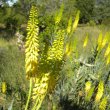
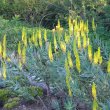
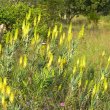
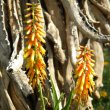
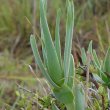



Comments
Your Aloe Tenuior Page
Your page on this Aloe has lots of question marks (?) There are so many that it gives one the impression that you don't have the answers.Can you please explain why so many question marks. Regards Ian Cameron
Aloe tenuior
Hi Ian
Thanks for your query. Try hovering you mouse pointer over a question mark. A box explaining the term will appear.
I must admit that I had not considered this format as being a possible problem but now that you have drawn it to my attention, I shall request my web gurus to add in an instruction at the top of each plant page to alleviate this issue.
I really appreciate your feedback as it serves to improve my website.
Kind regards
Lorraine
Discuss this plant
Share knowledge, ask a question or give an experience.